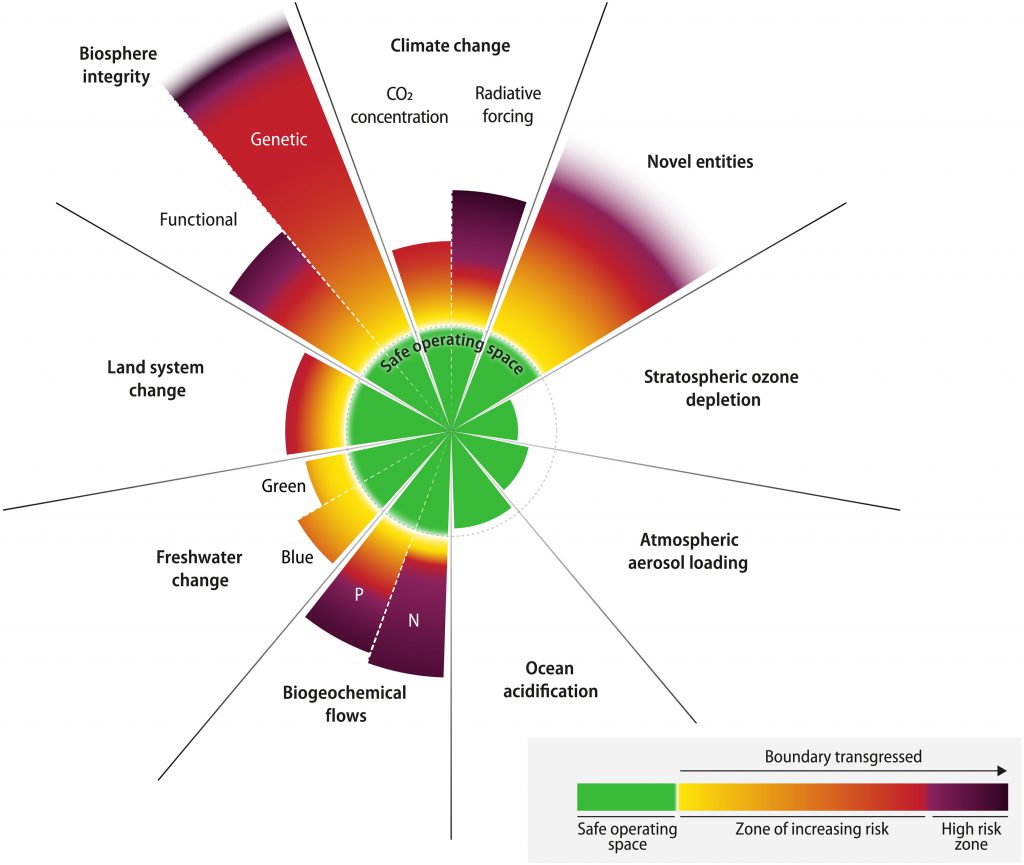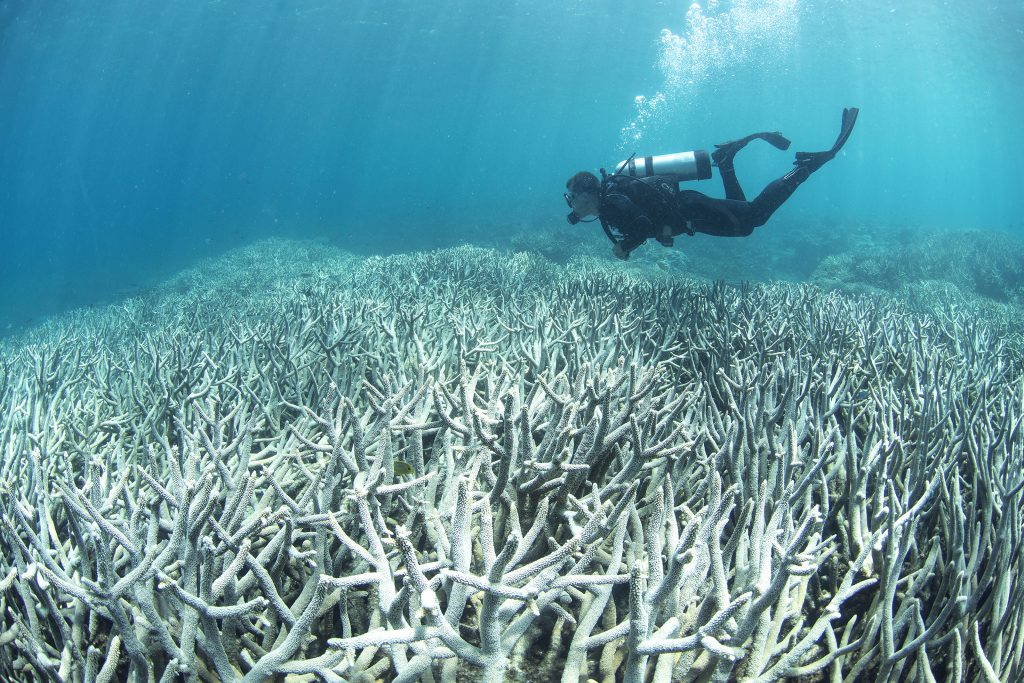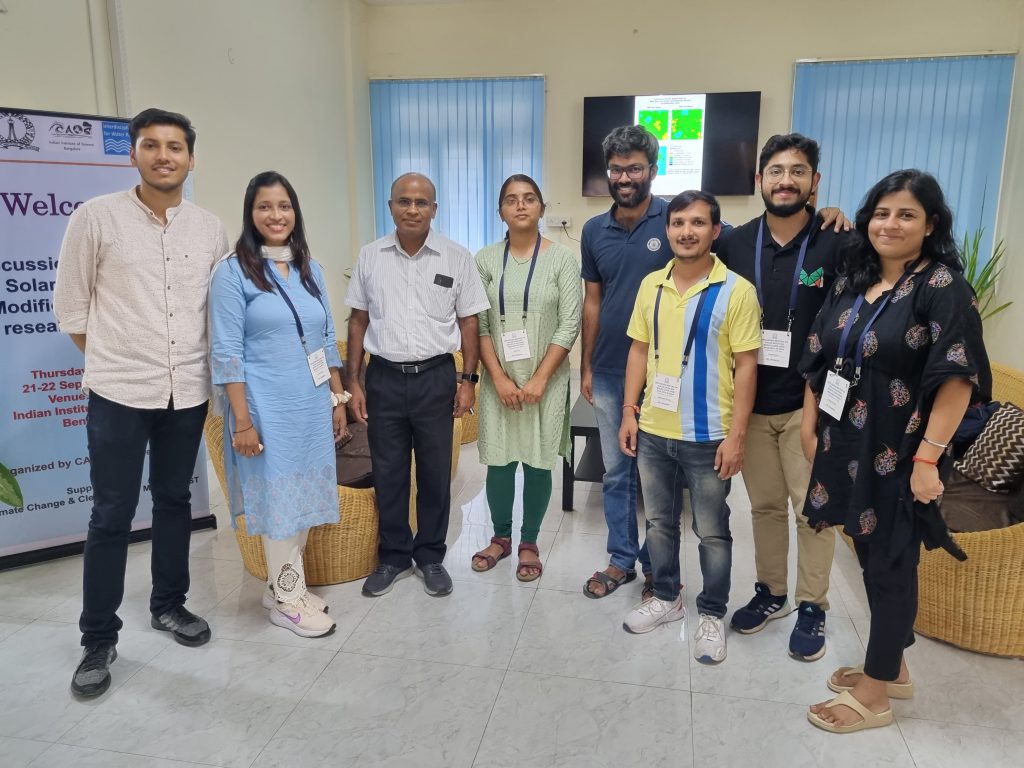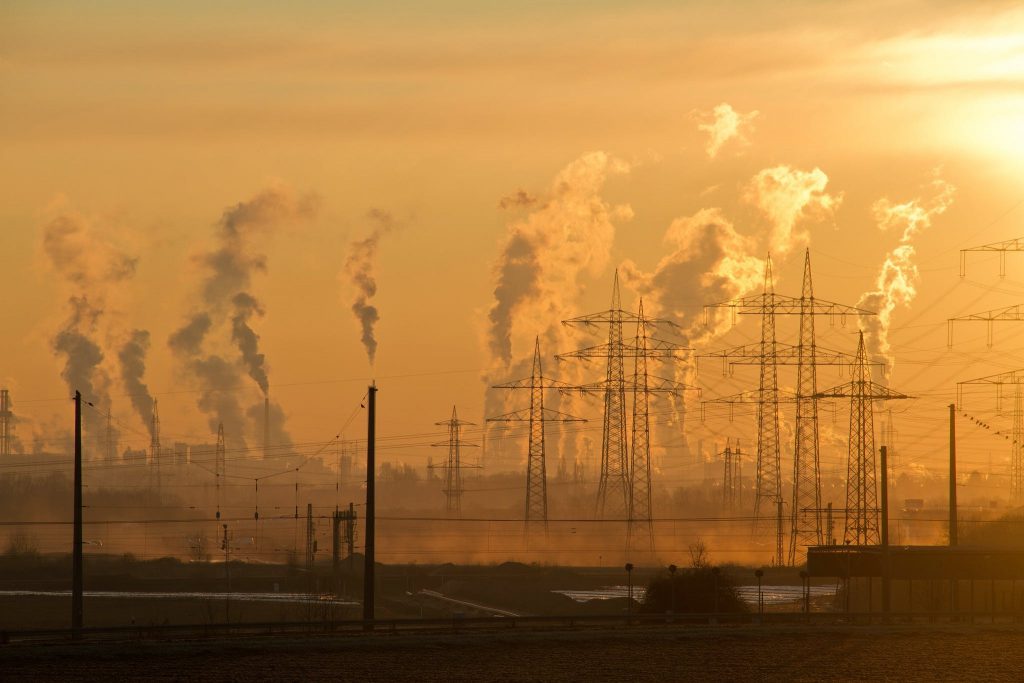Have we pushed the Earth beyond habitable conditions?

Twenty four years ago, Govindasamy Bala was a young physicist at the Lawrence Livermore National Laboratory in the USA. He and his colleague, Ken Caldeira, were carrying out research using a comprehensive climate model. For the first time, they wanted to test an improbable and controversial idea: Reducing the amount of sunlight that reaches the Earth’s surface, presumably by using reflectors in space. This could theoretically counteract the warming effects of rising CO2 levels.
This reduction could, in principle, be achieved by injecting reflective aerosols into the stratosphere, or by painting the roof of buildings white in cities or even by brightening the clouds over oceans, thus increasing the reflectivity of the planet. Such “intentional” large-scale approaches are now known as solar geoengineering or solar radiation modification.
Scientists had already proposed this idea as a quick-fix, but it was considered controversial because there could be several side effects on climate, and could also cause international conflict. It was also not known if it would be successful. “We thought this may not work because the characteristics of sunlight and CO2 are different,” explains Bala, currently Professor at the Centre for Atmospheric and Oceanic Sciences (CAOS), IISc. CO2 warms the planet uniformly from the equator to the poles year-round, day and night, and is evenly mixed in the atmosphere, while sunlight warms the planet mainly at lower latitudes, with stronger effects during the summer and in the daytime. Scientists worried that blocking the sunlight might end up cooling the planet unevenly, and may perhaps not work at all.
The predictions from Bala’s and Caldeira’s climate model, however, were surprising. They showed that if the incoming sunlight is diminished by about 2%, the warming effects caused by a doubling of atmospheric CO2 concentrations from pre-industrial levels (1950s) could be counterbalanced. “We were able to offset the effects of a doubled CO2 level way better than we expected,” explains Bala. They published their findings in 2000, but were prudent enough to mention: “… geoengineering schemes could markedly diminish regional and seasonal climate change from increased atmospheric CO2. Nevertheless, geoengineering schemes could prove environmentally risky.”
“That’s how it started,” says Bala. He had no idea then that his research on solar geoengineering and aerosols would one day lead him to work on a landmark effort to quantify human impact on Earth systems.
Setting the guardrails
Around the same time that Bala and team were working on this climate model, across the Atlantic Ocean, biological oceanographer Katherine Richardson had just joined a scientific steering committee at the International Geosphere Biosphere Program (IGBP) in Stockholm, Sweden. Until then, she had primarily focused on carbon cycling only in the ocean via phytoplankton and fish. “And then whatever happened to [the carbon] after that, I really didn’t care,” Katherine says, laughing.
“But when I got into this scientific steering committee, I realised, whoa, wait a minute. There is so much more to carbon cycling, and the whole Earth is an ecosystem.” She began to work with Will Steffen, who was the director of the IGBP then.
Will, a chemical engineer from the USA, was a leading proponent of Earth System Science, which recognises that the “Earth operates as a single, complex, adaptive system, driven by the diverse interactions between energy, matter and organisms.” It connects traditional disciplines such as ecology, biology, oceanography and climate science to build a “unified understanding of the Earth.” Keen on investigating humanity’s effects on the planet, Will led a humongous data analysis project to plot charts for 12 socio-economic trends (such as global population, use of motor vehicles, energy consumption, and so on) and 12 earth system trends (such as atmospheric CO2 levels, surface temperature, species extinction, and so on) from the 1750s till 2004 (this was later updated in 2010).
‘There is so much more to carbon cycling, and the whole Earth is an ecosystem’
Will and his team expected to see major changes in Earth system trends in response to increased socio-economic trends. But what they did not expect was an exponential rise in all the graphs at the same time, around the 1950s. These findings came to be known as the ‘great acceleration curves’, and were published in 2004 in the book Global Change and the Earth System: A Planet Under Pressure, co-authored by Will, Katherine and others.
“With this background, we started looking at what’s important for the Earth [to function] and the human activities that could totally change the system,” explains Katherine.
Along with Swedish scientist Johan Rockström, Director of the Stockholm Resilience Centre (SRC) at the time, Katherine and Will set out to find a scientific way to ask: “how much is too much?”
After a turbulent first meeting of 28 global scientists in Sweden in 2008, several follow-up meetings were set up which finally led to a framework that came to be called the planetary boundaries. They are, essentially, nine processes that regulate the Earth’s stability and resilience, which have been greatly impacted by human activity. These include climate change, ocean acidification, stratospheric ozone depletion, biogeochemical flows in the nitrogen and phosphorous cycles, freshwater change, land system change, biosphere integrity, novel entities, and atmospheric aerosol loading.
Planetary boundaries are nine processes that regulate the Earth’s stability and resilience, which have been greatly impacted by human activity
Each boundary is linked to a control variable with specific safe values. For example, for climate change, the control variable is CO2 concentration, with a safe boundary at 350 ppm. If these values are exceeded, there’s a higher risk of causing irreversible changes (the current level is 417 ppm).
In 2009, the scientists quantified seven of the nine planetary boundaries, revealing that three (climate change, biospheric integrity, nitrogen cycle) were already breached. In September 2023, six boundaries were reported as crossed, sparking global concern.
Why does the Earth need to stay within these boundaries? To answer this question, we need to travel back to an ambitious polar research project in the early 1990s.

Paradise on Earth
In the summer of 1989, a team of European scientists set up camp at 3,200 m above sea level, right in the middle of the world’s second largest body of ice – the Greenland ice sheet. Braving biting winds, they wanted to extract an ice core about 3,000 m deep, at its thickest point.
Ice cores act like Earth’s time capsules. Tiny air bubbles trapped within these cores can reveal past atmospheric gas concentrations. Additionally, isotopic ratios of oxygen and hydrogen in the ice can tell us about historical temperature variations.
Over the next three years, using a steel cable and an electromechanical drill, they extracted these ice cores. Finally, on 12 July 1992, the drill hit bedrock. At this depth, the ice is more than 250,000 years old.
Analysis of the ice cores from this Greenland Ice Core Project (GRIP) revealed several insights. The most fascinating was a graph that showed how, over the past 100,000 years, the Earth seemed to have had a highly unstable climate, with periods of colder glacial periods interspersed by warmer interglacial periods. The scientists noted dramatic temperature oscillations within relatively short periods, sometimes variations of about 10°C within one decade.
But about 11,700 years ago, the graph presented a stark anomaly. The Earth’s climate relatively flatlined to a remarkably warm and steady interglacial period. It turns out that this epoch – geologists call it the Holocene – was the evolutionary Eden for Homo sapiens.
As the Earth warmed, glaciers began to retreat. Tundra gave way to forests and grasslands. Large mammals that had adapted to the ice age, like the mammoth, vanished, leaving space for smaller mammals to evolve and proliferate. Humans, too, found it easy to spread around the world. As populations increased, we began inventing processes that would change the planet forever.
‘The Holocene … is the only type of environmental condition we know for certain our societies can thrive in’
“It is only in this [Holocene] period that everything we associate with modern humanity was developed – agriculture, written language, the big civilisations – everything. This is the only type of climate and environmental condition we know for certain our societies can thrive in,” noted Katherine at the 2016 Breaking Walls conference in Berlin. “We shouldn’t do anything that would risk putting it out of this state.”
But we may have already done just that. We are now living in what many scientists are unofficially calling the Anthropocene, a new epoch defined by humanity’s colossal impact on Earth systems. Environmental conditions change on Earth over long periods – meteors can crash into it, solar flares or volcanic eruptions can drastically change the climate, and tectonic plates can shift, changing the flow of continents and oceans. Such changes have shaped the planet over its 4.6 billion-year history.
Now, however, all scientific evidence points to humans as the primary drivers of change on the Earth.

About half of the Earth’s habitable land has been converted to rear livestock and agriculture. We move sediment, rock and sand at will to build our cities, so much so that sand is the second most exploited natural resource in the world after freshwater. More than half of ocean water is actively fished. Nine out of 10 of us breathe unhealthy air. Man-made microplastics have been found in everything from the salt we eat to human blood and breastmilk. In just 50 years, we have managed to push the Earth out of a state it had been in for 10,000 years.
In just 50 years, humans have managed to push the Earth out of a state it had been in for 10,000 years
An Evolving Science
After the publication of the first planetary boundaries paper in 2009, Johan, Katherine and Will continued refining the science of quantifying a “safe operating space for humanity.” They needed more people in the core team. Steffen suggested global sustainability scientist Sarah Cornell, who jumped at the chance. Her work in the 1990s had contributed to worldwide efforts to quantify and understand the global nitrogen cycle. “My primary role was to connect domain expert scientists and Earth system scientists to refine the framework’s message,” says Sarah, who is now a Principal Researcher at the Stockholm Resilience Centre (SRC).
The SRC became a hub for the planetary boundaries work to continue. After laying out the basic framework for nine boundaries and quantifying seven in the first paper, the focus now was to dive deeper and take critical feedback from peers as well as social scientists into account. An update was published in 2015, redefining some of the boundaries, and recognising two of them – climate change and biosphere integrity – as the “core” boundaries. There was also greater emphasis on how the nine planetary boundaries interact with each other, clarifying misunderstandings that they are static and independent.
At that time, however, two of the nine boundaries were yet to be quantified – novel entities and atmospheric aerosol loading. These were the focus of the next phase of research. “We still couldn’t have question marks. We had to have metrics for all of them,” Katherine says.
Novel entities are human-introduced elements in Earth systems, like microplastics or genetically modified organisms. A working group was formed which noted that assessing the sheer quantity of such entities was a challenge, as the increasing production and release of diverse, potentially risky substances surpass our ability to monitor their safety. It was then established that the only truly safe operating space for novel entities is when they are entirely absent “unless their potential impacts with respect to the Earth system have been thoroughly evaluated.” This planetary boundary is set at zero release of untested synthetic chemical compounds. The report states this is “clearly currently overstepped.”
‘We were trying to identify a single number for the global aerosol boundary, and that was very challenging’
The atmospheric aerosol loading boundary, on the other hand, presented a peculiar dilemma. Unlike CO2, which lasts in the atmosphere for hundreds to thousands of years and is uniform across the globe, aerosols have a lifespan of only 10 days. This means that they are highly concentrated only near their sources, such as in the northern hemisphere where there is greater human activity, making it difficult to set a global limit. So, the team roped in some climate change and aerosol experts, like Bala.
“At that point [in 2015], only a regional aerosol boundary had been identified and quantified,” says Bala. “At the planetary scale, the mechanism by which aerosol could affect the global climate was not identified. We were trying to identify a single number for the entire world, and that was very challenging.”
Bala’s extensive research over the years on aerosols and their complex interactions with climate and monsoons provided a vital clue to set the planetary boundary value.
Aerosols are a suspension of fine solid particles or liquid droplets in air, and can be natural (like dust) or anthropogenic (man-made, like particulate air pollutants such as sulphates, nitrates and soot). Different aerosols influence climate in complex ways. Some aerosols form the nuclei for water vapour to condense as clouds, some like black carbon absorb solar radiation and warm the climate, while others like sulphates reflect the radiation back into space and cause cooling. Aerosols are also a major source of air pollution with huge implications for human health.
Setting the numbers for boundaries is not an absolute science, and keeps evolving
Aerosol Optical Depth (AOD) is a measure of the aerosol mass in the atmosphere and is a metric for sunlight extinction (loss). For example, an AOD increase of 0.1 in a column of air causes approximately 10% extinction of light. If the AOD value is large, more sunlight is extinguished and less sunlight falls on the Earth’s surface. “That also means the energy available for evaporation is reduced, and since evaporation is what ultimately falls as rainfall, the hydrological cycle is affected,” explains Bala.
Bala’s research group found that the differences in AOD between the northern and southern hemispheres can greatly impact monsoon rainfall in the tropics by altering the energy balance between the two hemispheres. “If you inject reflective aerosols into the northern hemisphere, the rainfall in the northern hemisphere monsoon regions will decrease, and rainfall in the southern hemisphere monsoon regions will increase. And vice versa,” he explains.
Their modelling studies revealed a significant impact on Indian rainfall when the AOD difference between the two hemispheres changed by 0.25 – the rainfall decreased by more than 20%, a very high number (even a 4-5% change can shift a monsoon classification from normal to excess or deficit). The AOD imbalance between the hemispheres also means uneven energy balance between them. A recent paper from Bala’s lab, which quantifies the sensitivity of tropical regional monsoon systems, shows that the Indian monsoon rainfall could decrease by about 8% for every 0.1 increase in interhemispheric difference in AOD.

The aerosol boundary was thus set at 0.1, with increasing risks from 0.1 to 0.25, using the mean annual interhemispheric AOD difference as a control variable. Presently, the interhemispheric difference is around 0.076, indicating that the aerosol loading from human activities has not surpassed the set boundary. Yet.
“But these numbers are approximate … even a 0.1 AOD difference is probably pretty bad in itself,” says Bala. “Going forward, reduction in aerosol emissions and cleaning our air will have both climate and health benefits.”
Setting the numbers for boundaries is not an absolute science, Katherine says. “We can’t absolutely prove that where we set the boundary is the right place. Our understanding of [the] science evolves and as we understand better, we can be more specific.”
Planet, People and Policy
The planetary boundaries approach has been widely appreciated but also called out for neglecting global inequality and social justice concerns.
“We argued that the planetary boundaries are abstract numbers and mostly quantitative. Very few of them are qualitative, applicable at local scales or take into account significant harm to humans,” says Joyeeta Gupta, a professor of environment and development in the Global South at the University of Amsterdam. Co-chairing the Earth Commission with Johan Rockström, Gupta, along with 40 other natural and social scientists (including Bala), built on the planetary boundaries framework and added layers of social equality and quality of life to the analysis. They published their version – the Safe and Just Earth System boundaries – in May 2023.
By including social justice and equality considerations, some of the ‘just’ boundaries are set at tighter values than the ‘safe’ boundaries. When it comes to climate, for example, while the planetary boundaries framework considers 1.5°C of global warming as relatively ‘safe’ for humankind, the “just” boundary is set at 1°C to avoid “significant harm such as loss of lives, livelihoods or incomes, displacement, loss of food, water or nutritional security, chronic disease, injury or malnutrition.”
For its part, the planetary boundaries framework makes it explicit that it “does not dictate how societies should develop.”
“The planetary boundaries are not goals, targets, budgets or tolerable limits. Exploring these needs much more than science! Earth is a complex living system, not a machine,” Cornell adds. “The framework provides a way to diagnose a world that is being changed, to motivate societies to act in more ‘joined up’ ways rather than treat each global change process separately – as global policymaking has tended to do.”
‘The planetary boundaries are not goals, targets, budgets or tolerable limits. Exploring these needs much more than science’
90 seconds to midnight
When scientists told the world in 1974 that chlorofluorocarbons (CFCs) could destroy the Earth’s protective ozone layer, few took them seriously. Until 10 years later, when a thinning in the ozone layer was detected above Antarctica. Countries around the world swiftly pooled resources to rectify the situation. In just three years, the Montreal Protocol was ratified in 1987, setting a mandatory timetable to phase out ozone-depleting substances. Developing countries were funded to aid in this transition, and the companies that made these chemicals came up with alternatives. Consequently, the ozone layer slowly recovered and is now comfortably within the ‘safe operating space.’ This is widely regarded as one of the swiftest environmental corrective actions in human history. It also highlighted something crucial – science alone cannot save the world without backing from global policy and cooperation.

But despite global treaties to combat human-induced climate change, such as the Kyoto Protocol (1997), and the Paris Agreement (2016), there has been insufficient progress, as many nations are not willing to sacrifice economic development for the sake of the environment. Katherine suggests redefining economic system concepts, particularly around the emission of waste. “It should cost [corporations] to release greenhouse gases, to put waste into the environment. Six of the nine planetary boundaries are related to our accumulating waste. I dream that in 2050 children won’t know what waste is,” she says.
With six planetary boundaries already breached, the consequences described by the authors seem to be unfolding in real time across the world. 2023 was reported to be the hottest year on record. Extreme weather events are becoming more and more common. Last year, the Doomsday Clock, a symbolic countdown to presumed human extinction established in 1947, was set at 90 seconds to midnight, the closest it has ever been, pointing to a possibly dystopian future.
“This dystopian [future] will be a realistic conclusion of [our species], unless we stop functioning as ‘business as usual,’” remarks Katherine. “It’s never going to be ‘business as usual’ again.”




